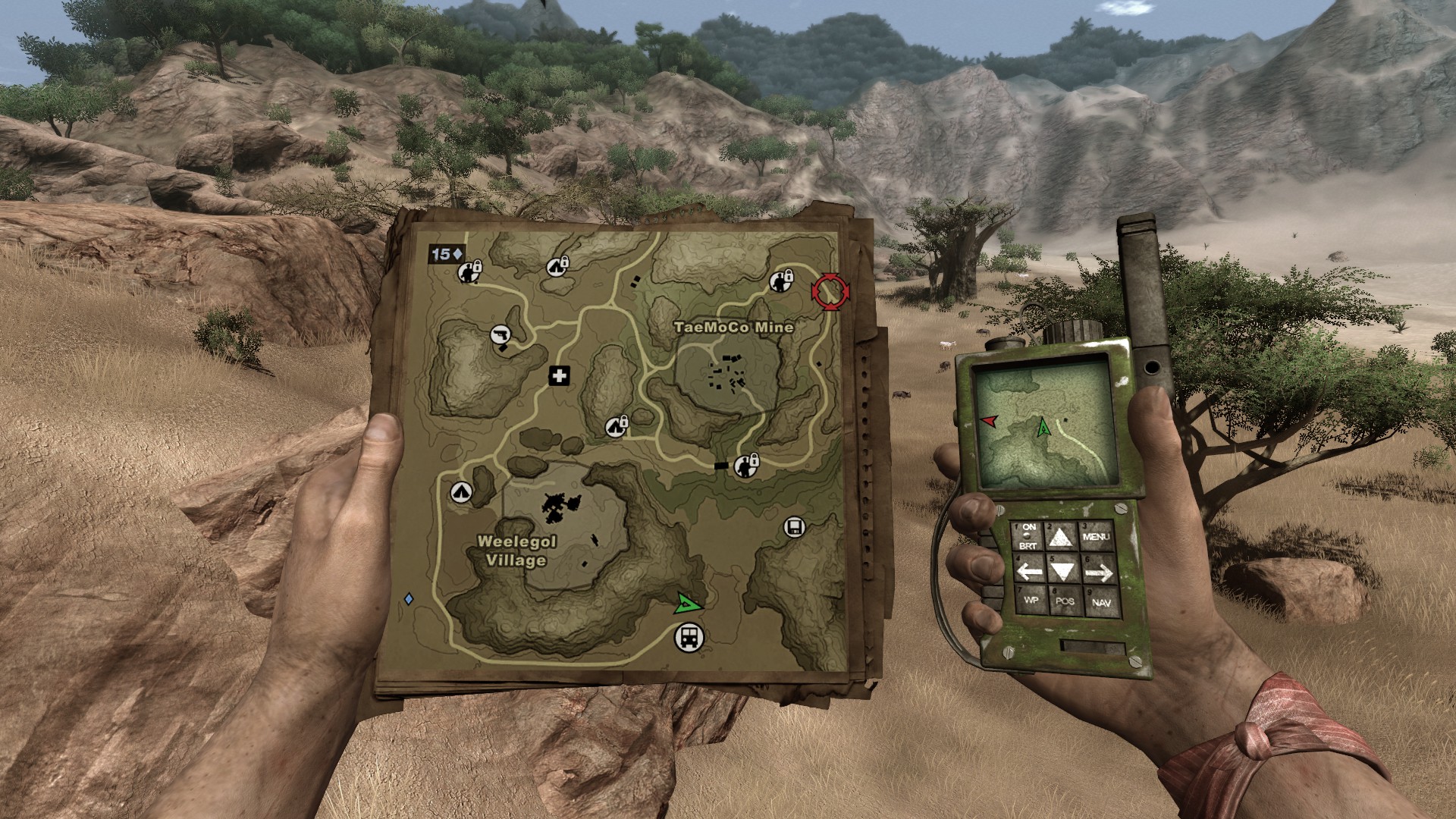I’ve seen some people complain on the internet about the lack of fast travel in Far Cry 2.
In later games in the series (I’ll focus on Far Cry 3, which I have the most experience with) every outpost / safe house becomes a fast travel point once it’s cleared. In Far Cry 2, outposts and safe houses are separate things, neither become fast travel points, and, in the case of outposts, they can’t even really be cleared. Enemies will respawn at outposts and enemy patrols are always a threat. The only fast travel of any kind is between bus stations at the corners and in the center of the maps, which serve more to multiply potential routes between locations than to eliminate travel.
It might be tempting to think of this difference as merely a sign that Far Cry 2 is an older game, like its ideas were only partially developed and were later perfected in the sequels.
But, it seems to me that this particular difference actually and radically changes the player’s strategic approach to the game and therefore the nature of the gameplay itself. Far Cry 3 isn’t just an iteration on Far Cry 2, it is a different kind of game (for better or worse or just different).
Because clearing outposts establishes fast travel and removes hostile patrols, Far Cry 3 is a game of conquest. The player is claiming territory and increasing his influence. Traveling to a new outpost is striking out from a permanently safe place into a temporarily dangerous one so you can make it permanently safe too.
In contrast, territory in Far Cry 2 never becomes safe. It’s always dangerous. This means that, rather than pushing a boundary outward, persistently decreasing the hostility per square mile, the player plans routes through a permanently hostile environment on his way to objectives.
Since the player can’t just fast travel to a safe location at any time, this planning has to take into account limited ammunition, limited healing, weapon degradation (which can lead to jams, a design element removed from Far Cry 3) and having to accomplish some objective at the end of the trip; an objective that probably involves shooting the limited ammunition from the degrading weapons, and taking damage that will need to be healed.
Far Cry 3 says “Take control”, Far Cry 2 says “Try to survive”. By the way, this contrast also expresses the difference in the stories of Far Cry 2 and 3. In Far Cry 3 you are a liberator and rescuer. In Far Cry 2 you are a dangerous predator among dangerous predators.
Far Cry 2 is kind of an open world immersive sim. A Molotov might light a tree on fire, which starts a brush fire, which blows up a car, which blows up an ammo cache. You might get hit by a car, get saved by your buddy, and then he might get killed in the ensuing shootout. The simulation is mainly limited to things setting each other on fire and people getting shot, but it’s still pretty exciting stuff.
It’s these dynamic encounters and the effort to survive them (while accomplishing your goals) that I think are at the center of Far Cry 2. Requiring the player to traverse the map, and always keeping that map hostile, is how the game puts the player in those game defining situations regularly.
So what I’m saying is, not only is lack of fast travel not a design defect in Far Cry 2, lack of fast travel is Far Cry 2.
